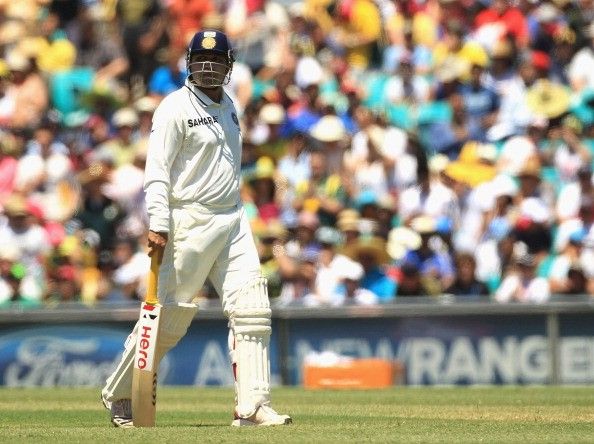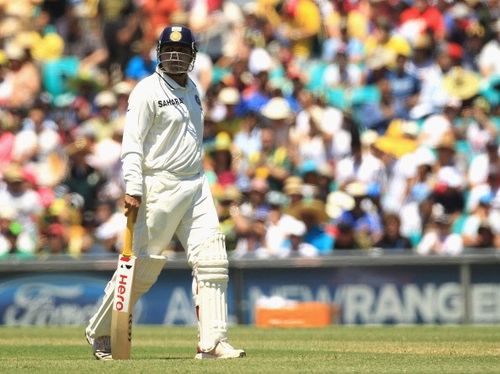
Virender Sehwag - The dream that ended too soon
That moment has finally arrived. That moment which we were all dreading. That moment which we knew would come sooner or later. That moment which marks the end of a golden era. That moment when we want to cry with sadness. That moment when we want to celebrate the career of one of the greatest players to have ever set foot on the Cricket field.
A reaction like this is understandable, for this player arguably gave us more joy than any other player ever had. Through those powerful square cuts, those turning off breaks, those occasional moments of brilliance in the field. Most importantly, through the way he played the game. Always with a smile, always with that child-like excitement.
For this reason, he was so unlike anybody else, he was so special. For this reason, it's hard to find someone who didn't like him. For this reason, he will fall outside any category of batsmen we ever create. For this reason, Virender Sehwag will always stand out.
Sehwag didn't have an ideal technique, he never moved his feet. Sehwag didn't follow the coaching manual. Sehwag used his hands, his eyes and his nonchalance to score the runs he scored.
Sehwag created his own coaching manual. One which told him to play his shots all the time. When he was on nought, when he was on 100, when he was on 195. All the time. His coaching manual told him to not give a damn about anything else. His score, his form, the quality of bowlers, the nature of the wicket, the overhead conditions. Nothing.
Sehwag's approach to batting meant he played and missed a lot. It meant he often played the most irresponsible shot you could imagine. It meant his batting could look ugly. It often did, but it didn't affect Sehwag. There was an air of detachment that he carried when he batted. He treated Cricket the way it should be treated - as a game.
When he was beaten, when he played an ugly shot, Sehwag always smiled. A toothy grin. Sometimes at the bowler, sometimes at the fielders. Other times, to himself. It was the same smile he smiled after a magnificent boundary or an effortless six. It didn't bother him, this issue of confidence that affected so many other players.
He never took any pressure, not of how many runs he needed to score, nor of the threat to his place in the team. "See ball, hit ball" hasn't had a better proponent than him. It never will.
A select few thought Sehwag to be a slogger. To call him a slogger would be a big insult. To his skill, to his mind, to his sheer magnificence.
Sehwag was a lot more than just a slogger. Sehwag was a genius. Sehwag was magic. At his best, Sehwag was all batting is about.
As the years passed, Sehwag's legend grew. There was Melbourne. There was Lahore. There was Adelaide. There was Chennai. There was Galle. There was Mumbai. Lee was conquered, so were Saqlain, Akhtar, Ntini, Murali, Mendis and everyone who ever bowled to him.
In the last few years of his career, these innings of mind boggling greatness became less and less frequent. Age started catching up with Sehwag. His reflexes slowed down. The hand-eye coordination was not what it once was. The fall of his career had set in. But Sehwag was still smiling.
He knew that, like the period of play when the playing missing became more frequent, he would eventually be able to get over it. When we all believed that Sehwag was on the wane, he refused to believe it. It was this refusal that gave us hope, to the point where people were calling for his selection in the current Indian ODI team.
Our connect with Sehwag is not merely to do with his batting. It's to do with how he was on the field, it's to do with who he was on the field.
Sehwag was not the fittest cricketer there could have been. He was round, he had heavy legs and a paunch. In this world of professionals, those with insane figures and fitness levels, Sehwag seemed like an ordinary person with a special talent that had made it big.
Unlike these hardcore professionals, Sehwag didn't take himself, or his failures very seriously.
Unlike the others, who seemed to be out on the border at war, he was just playing a game he loved playing. It's because of the reason he played the game, that of enjoying it to the fullest, that we were able to connect with him.
When we play start playing Cricket, the reason is not to score runs or take wickets, it is to enjoy. Along the way, a lot of us stop thinking this way. We become too preoccupied with success and failure. Sehwag didn't, and that is why he is so special.
A part of the Sehwag manual was to always go for glory. When people neared milestones, they slowed down. When Sehwag neared milestones, he moved into sixth gear. Almost all of his milestones came via a boundary or a six. It also meant that he missed many milestones. It thus felt that some of his innings, like the 195 at Melbourne, were left incomplete. It left us asking for more.
For the two and a half years since he last played a Test match, Sehwag did all he could to make a comeback. He became a middle order batsman, he started wearing glasses, he switched states, he lost his paunch. He did everything, but with age not on his side, he couldn't produce the kind of innings which make the selectors take notice.
There were flashes of the Sehwag of old, like the hundred in the 2014 IPL semi final, which gave us the joy we so desperately wanted, but they were few and far between. We all knew that the end was coming, but didn't want to believe it. We didn't want our dream to end so soon. For us, Sehwag was a dream.
Sehwag had fought for these two and a half years to delay the inevitable, because he refused to believe that his decline, his end was inevitable. Through his refusal, his battle away from the limelight, Sehwag gave us a glimpse into one last aspect of his character that many weren't aware of. That Sehwag just wouldn't give up, no matter how tough the situation was.
For two and a half years, Sehwag fought his decline and his end just because he believed that he was not finished and for this spirit, we should not look at his retirement as him giving up. We should look at it as the end of a fight that could no longer be fought.
For a player like Sehwag this end doesn't seem befitting. No final match, no one last standing ovation, no guard of honour. For a man who was always in the limelight, this end, in relative obscurity seems unfair. It's saddening. He knows he deserved better. But he'll still smile. Unaffected.
Just like some of his great innings, Sehwag's seems to be an incomplete story. He's a dream that ended too soon.
